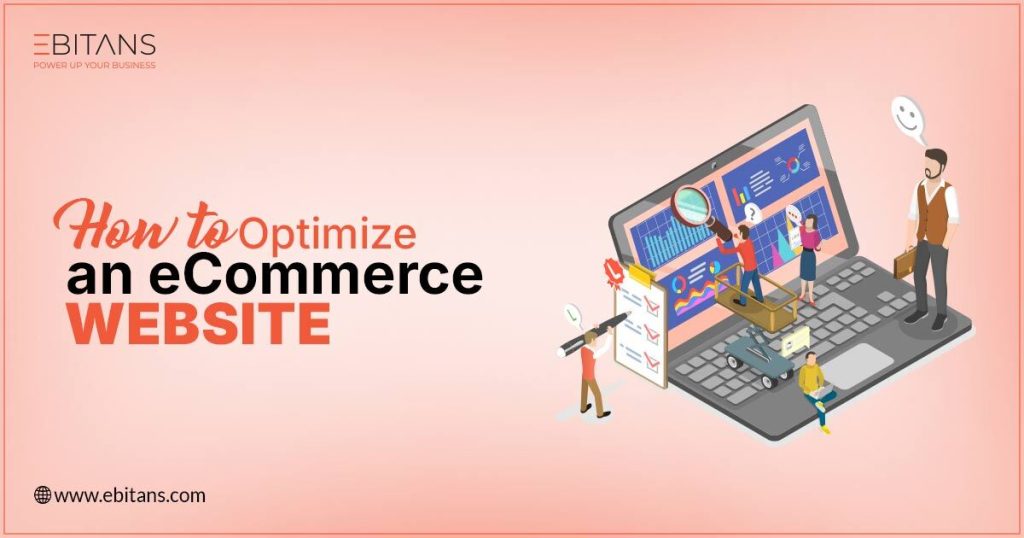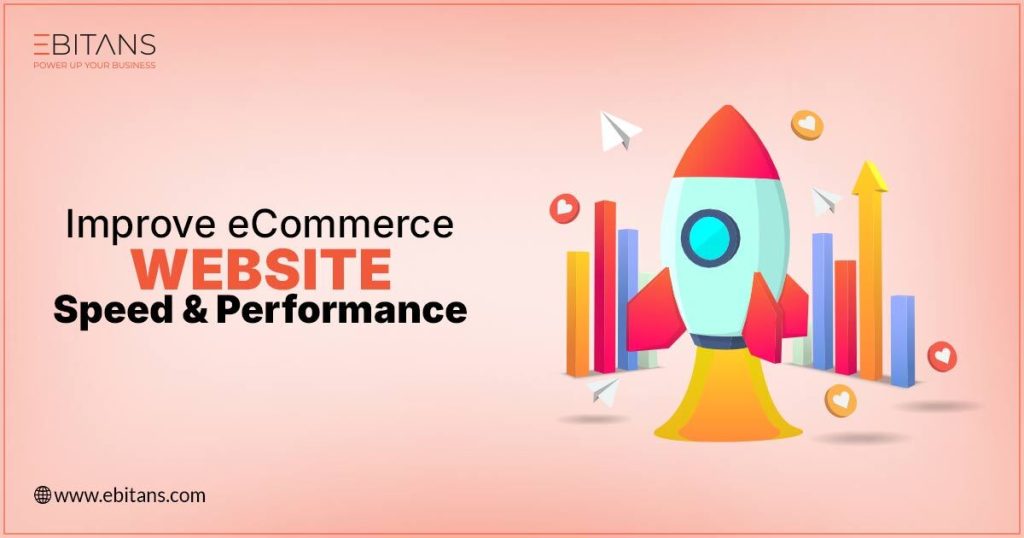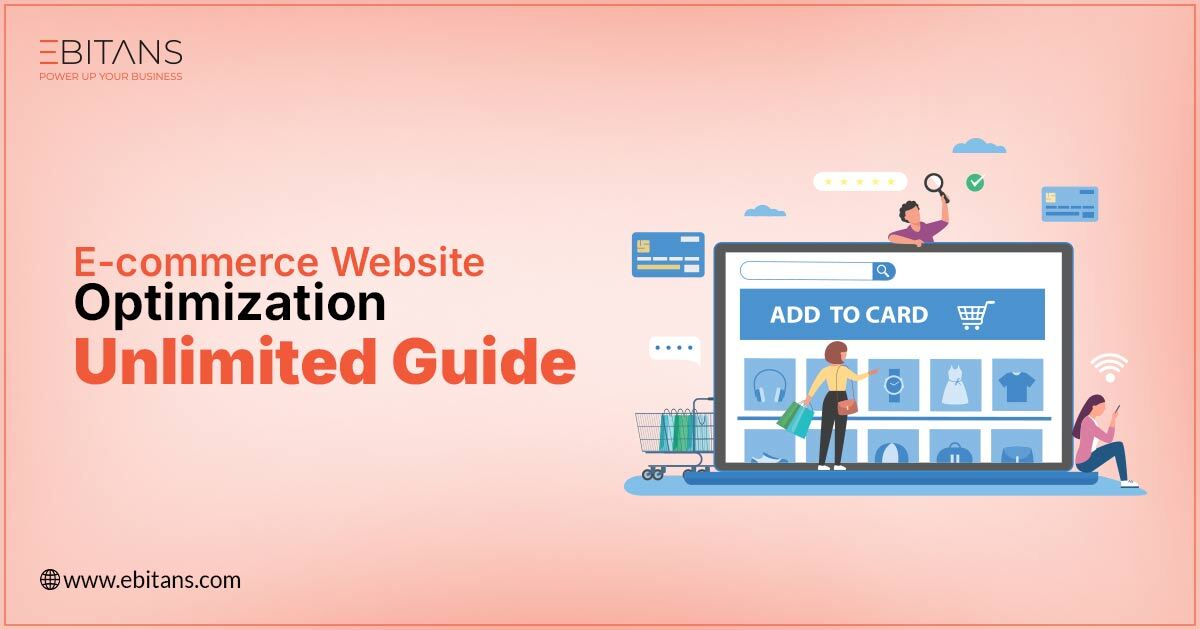Introduction
In today’s digital world, having an eCommerce website is essential for any business that wants to succeed. However, more than merely having a website is required. You need to ensure it’s optimized for performance, search engines, and, most importantly, your users. eCommerce website optimization is a process that improves your site’s performance across various fronts—from speed and usability to SEO and conversions.
In this guide, we’ll explore how to optimize an eCommerce website, the best eCommerce website optimization tools, and techniques to improve eCommerce website performance. We’ll also discuss the role of eCommerce optimization services for those who may need professional help to reach their goals.
eCommerce website optimization is improving various elements of your online store to ensure it performs at its best for users and search engines. This involves optimizing website speed, usability, SEO, and the overall shopping experience to encourage more traffic, better search engine rankings, and increased sales.
Table of Contents
Why eCommerce Website Optimization is Essential for Online Success
Think of your eCommerce site as your digital storefront. If customers can’t find what they’re looking for, or worse, if they experience issues like slow load times, they’ll leave and never return. With more competition online than ever, eCommerce website optimization helps you stand out, rank higher on search engines, and convert visitors into buyers.
Some of the most immediate benefits include:
- Better User Experience: Ensuring that your visitors can easily navigate your site and complete their purchases without friction.
- Higher Search Rankings: Search engine optimization (SEO) helps your site rank higher on search engines, bringing in more organic traffic.
- Increased Conversions: Optimizing your site can reduce bounce rates and increase the chances of converting visitors into paying customers.
How to Optimize an eCommerce Website: Key Factors

When optimizing your eCommerce website, several key factors come into play. Each of these can significantly affect how well your site performs, both in terms of usability and search engine visibility.
Mobile Optimization
With mobile traffic accounting for more than half of all web visits, mobile Optimization is no longer optional—it’s critical. Ensure your eCommerce website is responsive, meaning it adapts to different screen sizes and provides an excellent user experience regardless of the device being used.
Page Load Speed
Page load speed is a major ranking factor for search engines like Google. A fast website can lead to a better user experience and a high bounce rate. Tools like Google PageSpeed Insights can help identify areas where your site may be lagging. Consider compressing images, reducing redirects, and leveraging browser caching to speed up your site.
User Experience (UX)
User experience is at the heart of eCommerce website optimization. This includes everything from the layout of your product pages to the ease of navigating your site. Focus on creating a seamless and enjoyable shopping experience with clear calls-to-action, easy navigation, and an intuitive checkout process.
Search Engine Optimization (SEO)
SEO ensures your website is visible to search engines and, by extension, potential customers. This includes on-page elements like keyword-optimized product descriptions and technical aspects like site architecture and schema markup.
Conversion Rate Optimization (CRO)
CRO focuses on increasing the percentage of visitors who complete a desired action, such as making a purchase. A/B testing is a standard CRO method, allowing you to test different versions of your web pages to see which performs better.
eCommerce Website Optimization Tools You Should Know
Using the right tools can make optimizing your eCommerce website a lot easier. Here are some essential tools to consider:
- Google Analytics: This is used to track user behaviour, traffic sources, and conversions.
- Google PageSpeed Insights: To analyze and improve page load speed.
- Ahrefs: A comprehensive SEO tool that helps with keyword research, backlink analysis, and site audits.
- Hotjar: A tool for understanding user behaviour through heatmaps and session recordings.
- Optimizely: For A/B testing and CRO efforts.
- Yoast SEO: A WordPress plugin that simplifies on-page SEO optimization.
SEO for eCommerce Websites: Best Practices

SEO is one of the most critical aspects of eCommerce website optimization. The better your site ranks on search engines, the more traffic (and potential customers) you’ll attract. Here are some key areas to focus on:
Keyword Research
Identifying the right keywords is essential for attracting your target audience. Use tools like Google Keyword Planner, Ahrefs, or SEMrush to find high-traffic, low-competition keywords related to your products and services.
On-Page SEO
On-page SEO involves optimizing individual web pages to rank higher on search engines. This includes:
- Use target keywords in your product descriptions, headings, and meta tags.
- Creating unique and detailed content for each product page.
- Including high-quality images with optimized alt text.
Technical SEO
Technical SEO focuses on improving the backend structure of your website. This includes:
- Optimizing site speed and mobile usability.
- Implementing structured data (schema markup) to help search engines better understand your content.
- Ensuring your site is secure (HTTPS).
How to Improve eCommerce Website Speed and Performance

Website speed is one of the most critical factors in eCommerce optimization. A fast-loading website not only improves user experience but also has a positive impact on SEO. Here are some ways to speed up your eCommerce website:
- Optimize Images: Compress images without sacrificing quality to reduce load times.
- Minify CSS, HTML, and JavaScript: Removing unnecessary code can help improve load times.
- Use a Content Delivery Network (CDN): A CDN distributes your content across multiple servers worldwide, reducing the time it takes for users to access your site.
- Leverage Browser Caching: Caching allows some aspects of your website to be stored on a user’s browser, speeding up page load times when they return.
The Role of eCommerce Optimization Services
If you’re unsure how to optimize your site or don’t have the time, eCommerce optimization services can help. These services specialize in improving the performance, SEO, and conversion rates of online stores.
Common services include:
- SEO audits and implementation: Identifying and fixing issues that could be affecting your search rankings.
- CRO services: Optimizing your site to improve conversions through A/B testing and other methods.
- Performance optimization: Ensuring your site loads quickly and performs well under all conditions.
Common Mistakes to Avoid in eCommerce Website Optimization
While optimizing your site, it’s easy to make mistakes that can hurt your performance. Here are some common pitfalls to watch out for:
- Ignoring mobile Optimization: A significant amount of traffic comes from mobile devices, so paying attention to mobile Optimization can cost you customers.
- Overloading your site with plugins: Too many plugins can slow down your site and cause conflicts.
- Neglecting product descriptions: Thin or duplicate product descriptions can hurt your SEO efforts.
- Skipping SEO audits: Regular SEO audits help ensure that your site remains optimized and free of issues.
Tracking and Measuring Success: KPIs for eCommerce Optimization
Once you’ve optimized your eCommerce website, it’s essential to track your progress. Here are some Key Performance Indicators (KPIs) to monitor:
- Conversion Rate: The percentage of visitors who complete a purchase.
- Bounce Rate: The percentage of visitors who leave your site after viewing only one page.
- Average Order Value (AOV): The average amount spent per order.
- Traffic Sources: Identifying where your traffic is coming from (organic, paid, social, etc.).
- Page Load Time: Ensuring your site loads quickly for all users.
Conclusion
eCommerce website optimization is an ongoing process that requires attention to detail and regular updates. By focusing on areas like SEO, user experience, and conversion rate optimization, you can improve your site’s performance, attract more customers, and boost sales. Whether you’re doing it yourself or hiring professionals for eCommerce optimization services, the benefits of a well-optimized site are undeniable.
FAQs
What are the best tools for eCommerce website optimization?
Some essential tools include Google Analytics for tracking user behaviour, Ahrefs for SEO, and Google PageSpeed Insights for website speed analysis.
How important is mobile Optimization for eCommerce?
Extremely important! With most users browsing from mobile devices, having a mobile-optimized site is crucial for both user experience and SEO.
Can I optimize my eCommerce site without any professional help?
Yes, with the right tools and knowledge, you can optimize many aspects of your site. However, professional eCommerce optimization services can take your site to the next level.
How often should I audit my eCommerce site for SEO?
Regular audits should be performed at least every 3-6 months to ensure your site remains optimized and free of issues.
What is conversion rate optimization (CRO) in eCommerce?
CRO involves improving your website to increase the percentage of visitors who make a purchase or take another desired action. This can be done through A/B testing, enhancing site navigation, and more.
